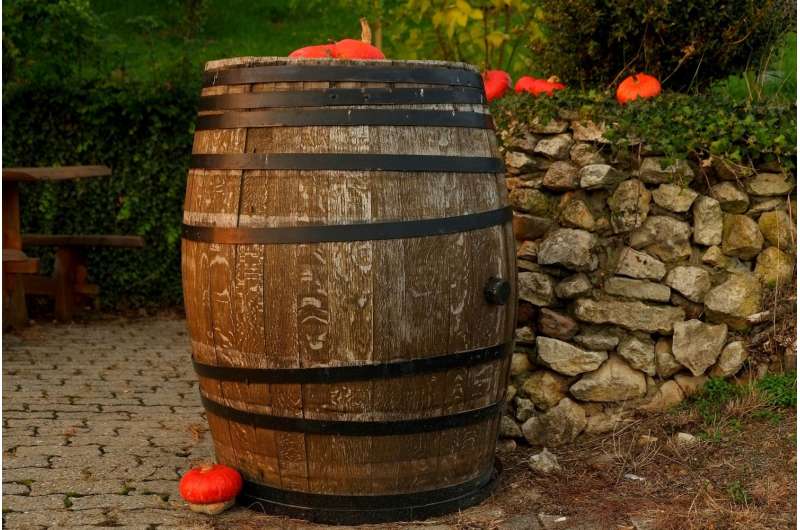Researchers investigating the influence of fungal rot on the aromas of must and wine

Yoghurt, beer, bread and specialities such as tasty blue cheeses or good wine—special microorganisms and refining processes first produce the pleasant flavours and enticing aromas of many foodstuffs. Researchers at Friedrich-Alexander Universität Erlangen-Nürnberg (FAU) have now investigated the formation of rot in grapes and have shown that when this is caused by certain kinds of mould fungi, the resultant wine can have not only mouldy but also floral aromas. The researchers have published their results in the leading journals Frontiers in Chemistry and Food Chemistry.
Those who enjoy a glass of good wine are often familiar with the regions that produce them and the type of vines that grow there. However, climate change is starting to influence these important aspects. 'In the context of climate change, the effect of microbial and weather conditions on the aromas produced by wine is becoming increasingly significant as these can have both a positive and negative impact on odour depending on grape variety and location,' says Prof. Dr. Andrea Büttner, Professor of Aroma Research at FAU. 'Recently, a form of rot that was previously of minor to no relevance and is caused by certain microorganisms and other agents is starting to appear on vines.' Nevertheless, the associated rotting process or mould infestation is not always a problem. 'However, the same microbe can have undesirable effects in another context, depending on the extent of infestation,' adds Büttner.
As the formation of rot in grapes has a major effect on the quality of must and wine, she decided to analyse the main odour components of musts and the wines produced from them in collaboration with researchers from Geisenheim University. Two types of samples from various grape varieties were examined. Some were healthy samples, while others had been attacked by two types of fungi.
The researchers looked at Botrytis cinerea, a type of wine grape fungus that can cause significant reduction of harvest yields. At the same time, however, it can also contribute to an improvement in quality. 'Our ancestors found out by means of trial and error which agents improve products and which are harmful. This is how blue cheeses, wine, beer and many other foodstuffs came into being. We now have the ability to standardise these processes and even investigate them in detail.
The researchers first demonstrated that Botrytis cinerea, which is known to also have beneficial effects in connection with so-called 'noble rot', can generate in its negative fungal form not only various musty-mouldy aromas but also fruity and floral odours. The substances formed during this process are complex.Various metabolic processes and microbial change processes result in different aromas.
Also working on the joint project, which was initiated in 2014 under the supervision of Prof. Dr. Andrea Büttner, were Angela Lopez Pinar in connection with her doctoral dissertation, Prof. Dr Doris Rauhut of the Institute of Microbiology and Biochemistry and Prof. Dr. Ernst Rühl of the Institute of Viticulture, both of Geisenheim University. The doctoral dissertation of Angela Lopez Pinar was funded by the Bavarian Research Foundation at FAU.
Future research will need to clarify to what extent vintners can make use of these alteration processes. 'We plan to develop a concept to control the colonisation by new or mutated types of grape rot that will lead to the creation of new aromas that will be of interest to consumers,' concludes Büttner. The researchers also intend to define strategies for wine producers that will help them deal with the changes to environmental conditions and open up new markets.
More information: Angela Lopez Pinar et al, Unexpected impact of 2-methylisoborneol as off-odour substance in aged wines, Food Chemistry (2017). DOI: 10.1016/j.foodchem.2016.10.021
Angela Lopez Pinar et al. Effects of Bunch Rot (Botrytis cinerea) and Powdery Mildew (Erysiphe necator) Fungal Diseases on Wine Aroma, Frontiers in Chemistry (2017). DOI: 10.3389/fchem.2017.00020
Journal information: Food Chemistry
Provided by University of Erlangen-Nuremberg




















